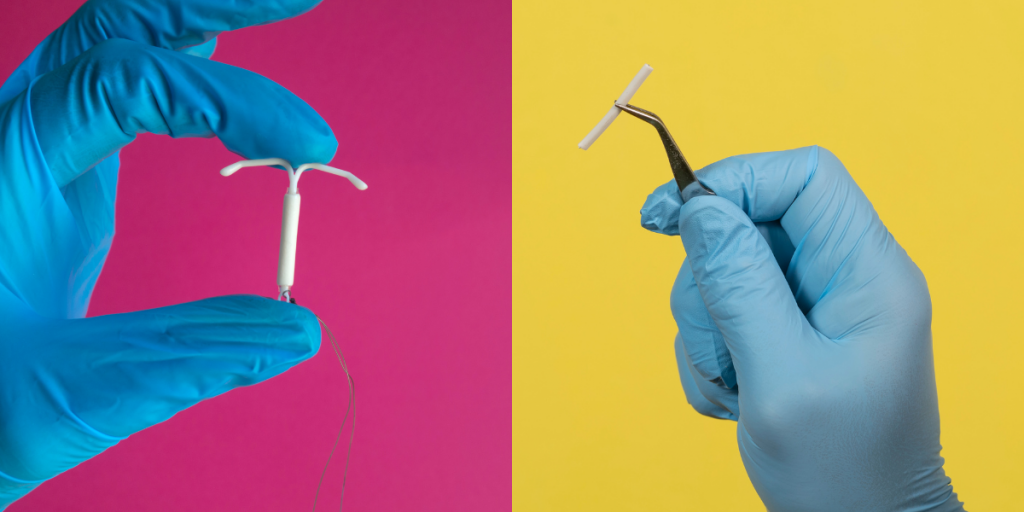Questions and Concerns about Long-Acting Reversible Contraception

Long acting reversible contraception—or LARC—methods are safe, reliable, and prevent pregnancy for years. For many people they are a great choice, since they don’t require much thought after they’re inserted. There’s nothing to remember every day and no interruptions before sex. Unfortunately, some people may avoid LARC methods due to misconceptions about safety or the impact on health and future fertility.
While the history of coercion and misuse of LARC methods is a legitimate cause for concern and no one should be pushed into choosing a contraceptive method that isn’t right for them, it is also important to have accurate information about these methods. The best choice is an informed one.
Below we address some of the common myths and misperceptions about LARC methods, so you can decide whether a LARC option is a good choice for you.
Does it hurt to have a LARC inserted?
This is a common question—and fear—about LARC methods. Does it hurt to have an IUD or an implant inserted? How bad is it? The answer is it depends on the method, and it depends on the person and there often isn’t a way to know how you’ll feel.
Let’s start with the implant because the answer is simpler. It should not hurt very much to have this method inserted in your arm. Providers usually start with a shot of lidocaine; the shot might pinch a little bit, but after that the area should be numb enough that you would feel pressure but not pain. (Kind of like when you’re getting a cavity filled and the dentist uses an anesthetic.)
There can be bruising with the insertion procedure, and you may have a very small scar after removal. You can hear more from people who have used this method at Bedsider.
IUD insertion is more involved, and you’ve probably heard some people say it hurts a lot. Again, it really varies person to person.
To put in an IUD, health care providers use a few special tools to hold the vagina open, open the cervix slightly, and insert the IUD into the uterus. Some people say it’s uncomfortable; the speculum feels heavy and the other tools “pinch” the cervix. Other people say it’s quite painful and feels like the worst menstrual cramps they’ve had.
The CDC recently recommended that health care providers discuss pain relief options with their clients before the procedure. The agency’s updated contraception guidance for clinicians suggests they consider two pain relief options: using topical lidocaine (a cream) to numb the cervix or using injectable lidocaine (a shot) near the cervix to numb the whole area.
Some health care providers offer even more pain relief options including IV sedation like that given to patients getting other outpatient procedures (think wisdom teeth removal or endoscopies) and nitrous oxide (often called “laughing gas”).
Ask your provider what she thinks is best. Some providers have been known to downplay pain. If you’re worried about the procedure and want a particular pain relief option—like nitrous oxide or IV sedation—that your provider doesn’t offer, you might consider looking for a different provider in your area. Some Planned Parenthood affiliates have recently started offering IV sedation.
Remember, though, IUDs last three-years and the insertion procedure usually lasts just 15 minutes. Worry about pain should only be one of the things you think about when deciding on a method.
If you want to learn more, check out this step-by-step guide on the procedure and listen to the story of one woman who had a hard time with her IUD insertion, but in the end found that it was worth the effort.

How will a LARC affect my period?
Another common concern is that a LARC will cause problems with your menstrual cycle, like excessive bleeding and spotting between cycles. While it’s true you may see some changes in your cycle, it will depend on the type of LARC you’re using.
For example, the hormonal IUD is more likely to make your periods lighter and less frequent—they might even stop completely. You may also have less cramping. The copper IUD, on the other hand, might cause increased bleeding, especially in the first 3-6 months. But for many people, this gets better over time. With either type of IUD, it’s not uncommon to have occasional spotting between periods, but again this may lessen over time.
Spotting and irregular bleeding are also common side effects of the implant, at least for the first year. Some people have heavier bleeding after getting the implant, while others may not have a period at all for a while. There’s no way to tell exactly how your body will react, but you should expect some irregularities with your cycle. You can learn more about spotting and irregular bleeding here.

Will it affect my future fertility?
There are some persistent misconceptions about the safety of the IUD—that it will cause problems like pelvic inflammatory diseases (PID), infertility (the inability to have a baby), or even cancer. Some of this likely stems from problems with a specific IUD used in the 1970s—the Dalkon Shield—which was associated with a higher risk of PID, scar tissue in the fallopian tubes, and infertility. That product was taken off the market fifty years ago, and these risks don’t apply to the IUDs available today.
Studies of people around the world have found that IUD users are no more likely to suffer from PID than those who use other forms of contraception. One word of caution: IUDs do not offer protection against STIs, and we know that PID is most often caused by untreated infections. IUD users should consider also using condoms when they have sex and get tested for STIs regularly. (When you get your IUD, ask your provider which tests she recommends and how often.)
Once an IUD is removed, your fertility returns to normal. The same is true for the contraceptive implant; your ability to get pregnant should return quickly.
IUDs and implants are both safe and effective options, but they are not right for everyone. The IUD does not cause cancers, but is not recommended for anyone who has had a gynecological cancer, like cervical or uterine cancer. The copper IUD should not be used if you have a copper allergy or a history of Wilson’s Disease, a rare disease that causes copper to accumulate in some organs.
Birth control methods with hormones, including hormonal IUDs and the implant, are often not recommended for anyone who has had breast cancer.
Tell your provider about your medical history so that they can help you choose the best method for you.
What about side effects?

When choosing any form of contraception, it is important to think about possible side effects. Not everyone will experience side effects, of course, but knowing what to expect—and how long these side effects might last—is important.
For example, some people using a hormonal IUD will have irregular bleeding, including spotting between periods or heavier bleeding during a period. However, this is more common during the first several months of use. After some months, bleeding may become lighter, menstrual cramps may decrease, and periods may disappear entirely.
With the copper IUD, which doesn’t rely on hormones, bleeding may actually increase, and periods may be heavier in the first months of use. You might also experience more cramping during your period. Again, these symptoms are more typical in the first few months of use and may get better over time.
With the implant, irregular bleeding—including spotting and longer, heavier periods—is also possible. While this may get better after the first 6-12 months, some users do not see any improvement. Of course, there are also users who have no periods or just occasional light spotting while the implant is in.
There have been a lot of anecdotal reports that suggest the implant makes users gain weight. While this my happen to some people, researchers have looked into the issue and have not found a direct link between the implant and weight gain. If you’re concerned about weight gain, talk to your provider before choosing a method.
Almost all birth control methods have some side effects. Follow up with your provider if you’re experiencing side effects. There may be things you can do to manage them, or you may decide that a different method would be better. That’s the great thing about LARC methods—they can be removed at any time.
Check out Bedsider to learn more about possible side effects, as well as more about real people’s experiences with LARC methods.